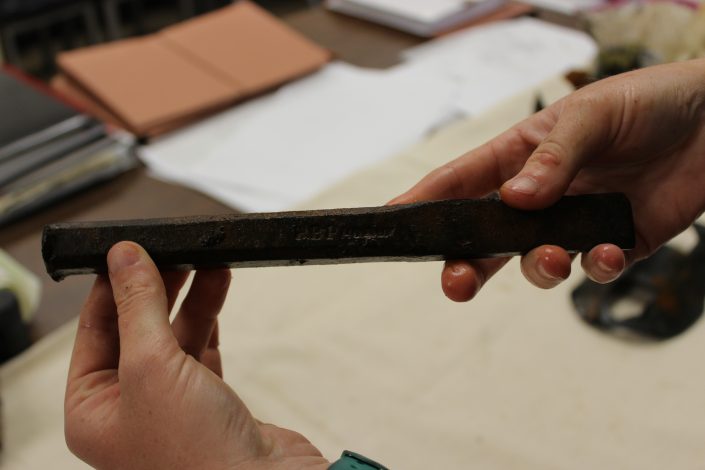Anthropologists use chisel to identify wreckage of 19th century steamship

Image: College of Liberal Arts
It’s not often that years of research culminate with a chisel, but that was the case for Carolyn Kennedy, an anthropology graduate student in the Nautical Archaeology Program in the College of Liberal Arts.
Kennedy and her team have studied the wreckage of four steamships at the bottom of Lake Champlain in Vermont for three years. This summer, she decided to focus on one in particular—the oldest and largest, which she believed to be the Phoenix II. She never expected to verify the name of the ship, but that changed during their second week of excavation.
“There was huge pile of rocks in the wreckage that we never intended to touch because they were too massive,” Kennedy said. “But since we had some diving volunteers, we decided to look.”
What they found was a discarded cache of tools containing, among other things, a chisel that was engraved with “SB Phoenix.”
“I was extremely ecstatic,” she said. “We were not expecting any kind of confirmation, let alone from a chisel, of all things.”
Built in 1820 to replace the original Phoenix, the Phoenix II was used for transporting passengers across the waterways of North America. It is famous for bringing the first fatal case of cholera to the United States in 1832, when a passenger contracted the disease in a Montreal hospital and died aboard the steamer in Whitehall, New York.
Today, what’s left of the Phoenix II lies at the bottom of the Shelburne Shipyard, its hull occasionally providing archaeologists with evidence of the past.
“None of the ships in the lake hold anything of monetary value,” Kennedy said. “What we’re finding is essentially their trash—glass bottles, a penny, screws and bolts. But for us, the historical worth is huge.”

